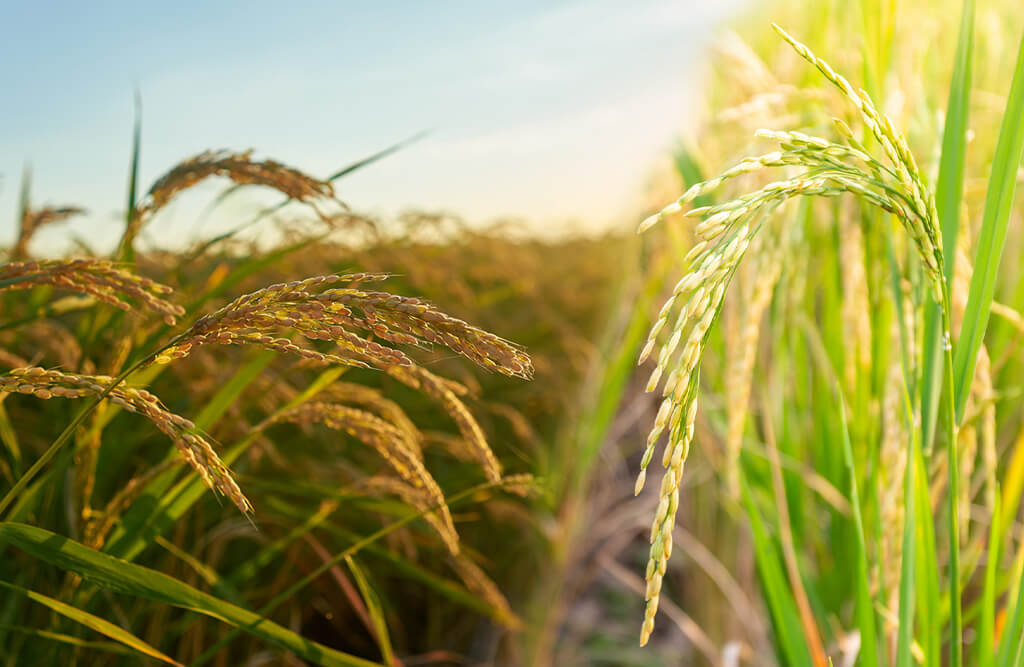
Rice cultivation holds great importance in India, with extensive growth seen across various regions. Historians suggest that while the indica variety of rice was initially cultivated in the areas around the foothills of the northeastern Himalayas, spanning from Burma, Thailand, Laos, Vietnam, to southern China, the japonica variety originated from wild rice in southern China and later found its way to India. Even today, wild rice continues to thrive in regions like Assam and Nepal. The cultivation of rice traces back to around 1400 BCE in southern India following the domestication of its varieties in the northern plains. Subsequently, it spread to all fertile alluvial plains nourished by rivers. Some scholars propose that the term "rice" finds its roots in the Tamil word "arisi." Rice is often symbolically associated with prosperity and fertility, evident in the tradition of tossing rice at newlyweds, reflecting its deep-seated connection with abundance and fecundity.
Rice stands as a nutritionally vital staple food, offering immediate energy due to its primary carbohydrate content. Conversely, rice contains low levels of nitrogenous substances. Its starch-rich flour is employed in crafting various food products. Additionally, when combined with other materials, rice straw contributes to the production of porcelain, glass, and pottery. The diversity and attributes of rice are vast, influenced by the species and environmental conditions in which it is grown. Polished rice typically contains protein levels ranging from 7% to 12%. The application of nitrogen fertilizers enhances the presence of certain amino acids.
Rice has profoundly influenced the culture, cuisine, and economic landscape of millions worldwide. For a significant portion of humanity, "rice is life." Recognizing its pivotal role, the United Nations designated 2004 as the "International Year of Rice." Rice serves as a critical primary food source for over 70% of the global population. Rice straw is utilized as animal feed, raw material for paper-making, and a fuel source. Rice bran is utilized in the soap industry, while pure rice oil can function as a cooling agent akin to cottonseed or maize oil. Rice bran wax, a byproduct of rice bran oil, finds application across various industries.
Rice cultivation in India takes place across diverse altitudes and climatic regions, ranging from 8 to 35 degrees north latitude and from sea level up to 3000 meters in altitude. Rice crops thrive in warm and humid climates, making regions with high humidity, abundant sunlight, and reliable water supply most conducive to cultivation. The ideal average temperature during the crop's growth period ranges from 21 to 37 degrees Celsius, while the crop can tolerate maximum temperatures ranging from 40°C to 42°C.
Rice cultivation requires more water than any other crop during the same period. It is a monsoon season (kharif) crop, relying on rainfall. Increased water is necessary for its cultivation. Water demand is typically higher during the germination phase. Soil moisture should be maintained during rice flowering. Sufficient water supply should be ensured until flowering. Before harvest, water should be drained to promote rapid and uniform ripening. Deep plowing of the soil with a tractor or plow before the rains or using a rotavator is advantageous in waterlogged areas and where drainage is insufficient during sowing. The use of a rotavator after plowing helps level the field.
Major Rice Diseases and Their Management: